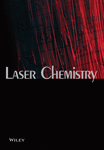Infrared Spectral Hole Burning of 1:1 Hydrogen-Bonded Complexes in Solution
Abstract
Transient picosecond infrared (IR) spectra of the OH and NH-stretch (v=0–1) absorption bands of several hydrogen-bonded complexes have been investigated. Solutions of 1:1 complexes of weak acids (methanol, triethylsilanol and pyrrole, < 0.1 mol/dm3) and bases (acetonitrile, pyridine and tetrahydrofuran, < 2 mol/dm3) in CCl4 at 295 K were interrogated with IR excitation and broadband probing. Lorentzian-shaped absorption bands are uniformly bleached while those with near-Gaussian bandshapes produce transient spectral holes. These results indicate a base functionality and hydrogen-bond strength dependence for determining the broadening mechanisms of these absorptions.




